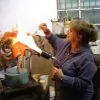Feast your eyes on the tantalizing works of British artist Sara Pope, celebrated for her luminous lip paintings characterized by her vivid use of colour and texture. Pope’s practice is sculpted by a rich background in fashion as a shoe designer, complemented by her stint in publishing as a magazine designer and art director. Throughout history, the portrayal of lips and mouths has served as powerful symbols of human emotion, expression, and sensuality.
Medieval art approached this motif with restrained subtlety, in contrast to the Renaissance’s embrace of realism and vivid expression. The Baroque and Rococo periods further evolved this trend, infusing depictions of lips with intense emotion and sensuality. Masters like Caravaggio, Rubens, and Leyster harnessed the power of lips to express deep sentiments.
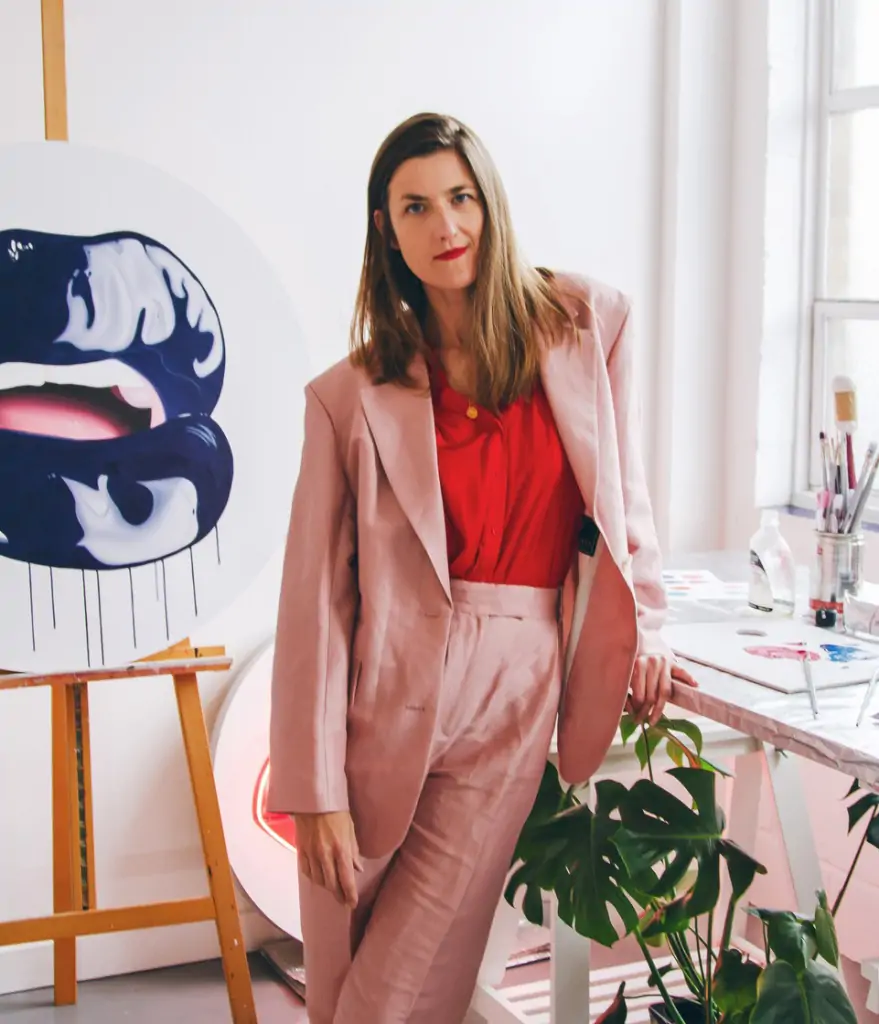
Beauty standards are dictated in order to ultimately boost product sales. In my work, I strive to capture this dichotomy, leaning more towards celebrating empowerment
Sara Pope
In the modern era, Picasso and Matisse adopted abstract and expressive styles, reimagining lips in terms of colour, form, and emotional depth. In contemporary times, lips have become a focal point in beauty standards and products. Fueling an obsession with aesthetic perfection, the temptation of advertising has become a pivotal force in cosmetic enhancements such as makeup, lipstick, and fillers. This trend significantly alters women’s beauty routines, often blurring the line between natural beauty and artificial enhancement in the pursuit of an idealized beauty standard.
Pope toys with the principles of cosmetic advertising, capturing the interplay between glamour and authority, showcasing mouths and lips in highly stylized representations. Her depictions of lips, particularly full and rendered in a bright, glossy red, epitomize the sought-after aesthetic of voluptuousness. These images conjure the luxurious finish of premium lipstick. Far more than just visually striking, these depictions delve into deep territories of beauty, desire, consumerism, and empowerment, offering a layered critique beneath their surface allure.
Pope’s latest exhibition, ‘Red,’ at London’s Grove Gallery, explores the impact of Red on our emotions, choices, and perceptions. Here, Pope delves into the realms of beauty, communication, and the elusive chase for perfection, examining how red unlocks a deeper understanding of the human mind and its collective experiences.
Pope’s work has been exhibited worldwide; notably, she is the sole female artist in seven decades to have her work displayed at the Vatican. Her work has also caught the attention of royalty, leading to a commission in 2021 from Princess Theodora Von Liechtenstein for a bespoke lip portrait in Pope’s signature style. We caught up with Pope to learn more about her practice, her future as an artist, and more.
Hi Sara, please introduce yourself to those who may need to become more familiar with your work. We’d love to hear about your journey into the arts, including pivotal and influential moments that shaped your path to becoming an artist.
Sara Pope: Hello! I’m an artist, primarily a painter, and the subject I choose to focus on mostly is the mouth. My path to art wasn’t completely straightforward. I journeyed through several areas before realising I wanted to dedicate myself to creating art. I began with a degree in Mathematics, followed by several years working in magazines as a graphic designer and art director, then moving into fashion, working as a shoe designer. There were a few influential people along the way who helped open my mind to what art could be and also see myself as a creative person and at one point, I just realised I have to make art!

Your work is renowned for its distinctive depiction of lips, often exploring themes of beauty, desire, and consumerism. Could you delve deeper into the themes and inspirations behind your practice?
SP: My artwork draws strongly on my experiences working in fashion and magazines. I’ve always been fascinated by how we decorate, adorn and express ourselves through clothes and makeup and the wonderful way we can use it to transform how we feel, to be creative and expressive. It can be extremely empowering.
When it comes to commercialising these things, though, it can lead to oppressive messaging, as beauty standards are dictated in order to ultimately boost product sales. In my work, I strive to capture this dichotomy, leaning more towards celebrating empowerment. Simultaneously, my art’s aesthetic mirrors the polished allure of beauty ads, also embracing the aesthetic of digital reality.
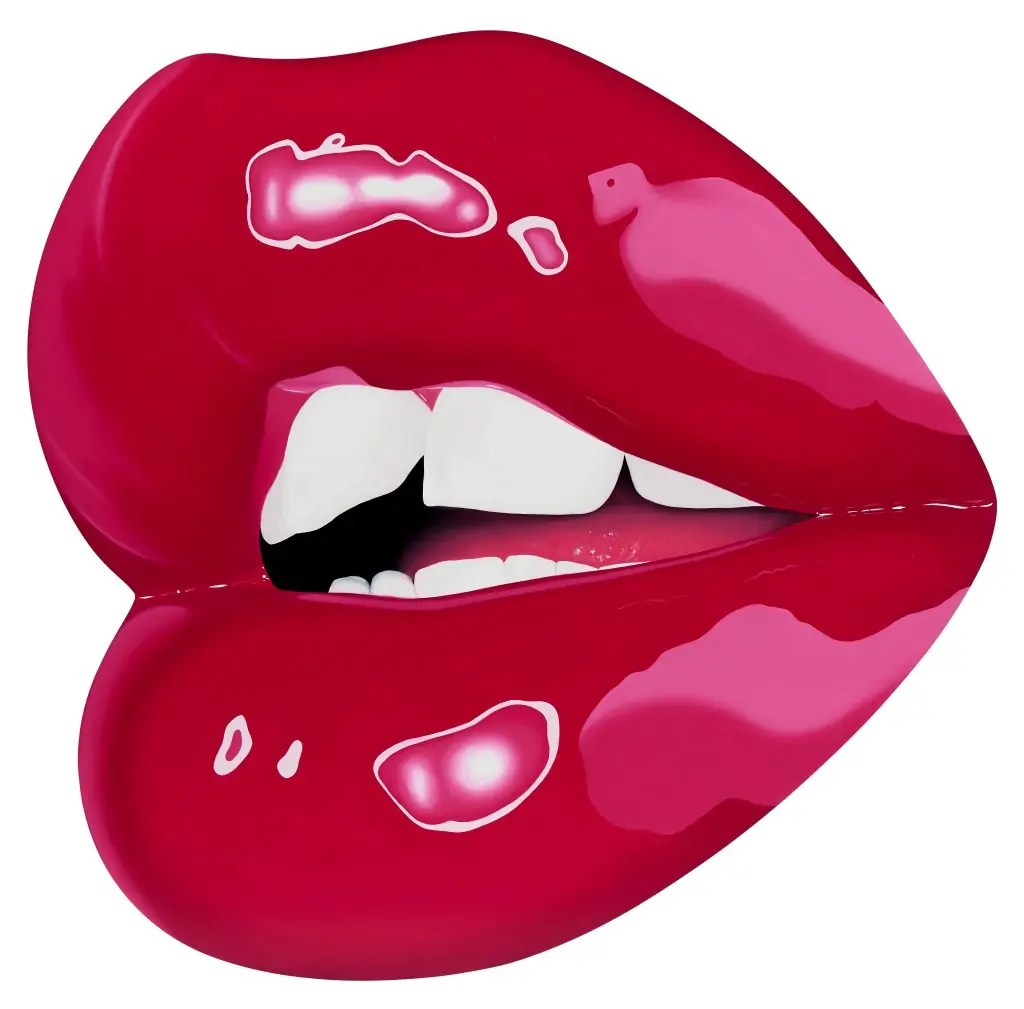
Building on that, could you walk us through your creative process? How do you blend traditional techniques with modern influences in your work?
SP: In my approach to creating a lip portrait, the process begins with choosing a subject. I invite my subject to my studio for an in depth study, where I begin with a makeup brush and a lipstick. I paint the subjects’ lips, then, using specific techniques of makeup and lighting, I start the process of capturing my subjects’ unique expression through an extensive photographic study.
These shots provide the foundation from which I draw inspiration to start the painting. The painting itself is a layered process involving several layers of thin oil-diluted paint being overlaid, blending and smoothing the colours extensively at every stage, sometimes also mixing lipstick into the paint. I aim for a result that’s polished and beautiful, and encapsulates the expression of my subject. I feel that my lip portraits are a modern take on the timeless art of portraiture.
Considering your background in fashion, how do you see the intersection of art and fashion influencing your work? How do these industries complement each other in your creative vision?
SP: I was first drawn to the subject of the mouth due to a fascination with the fundamentals of human communication, expression and attraction. Fashion is a field deeply intertwined with these elements, and so significantly shapes my artistic approach. Everything we wear or decorate our appearance with, is communicating something (consciously or unconsciously) to others. I find this compelling and exciting and so naturally weave these concepts into the fabric of my art.
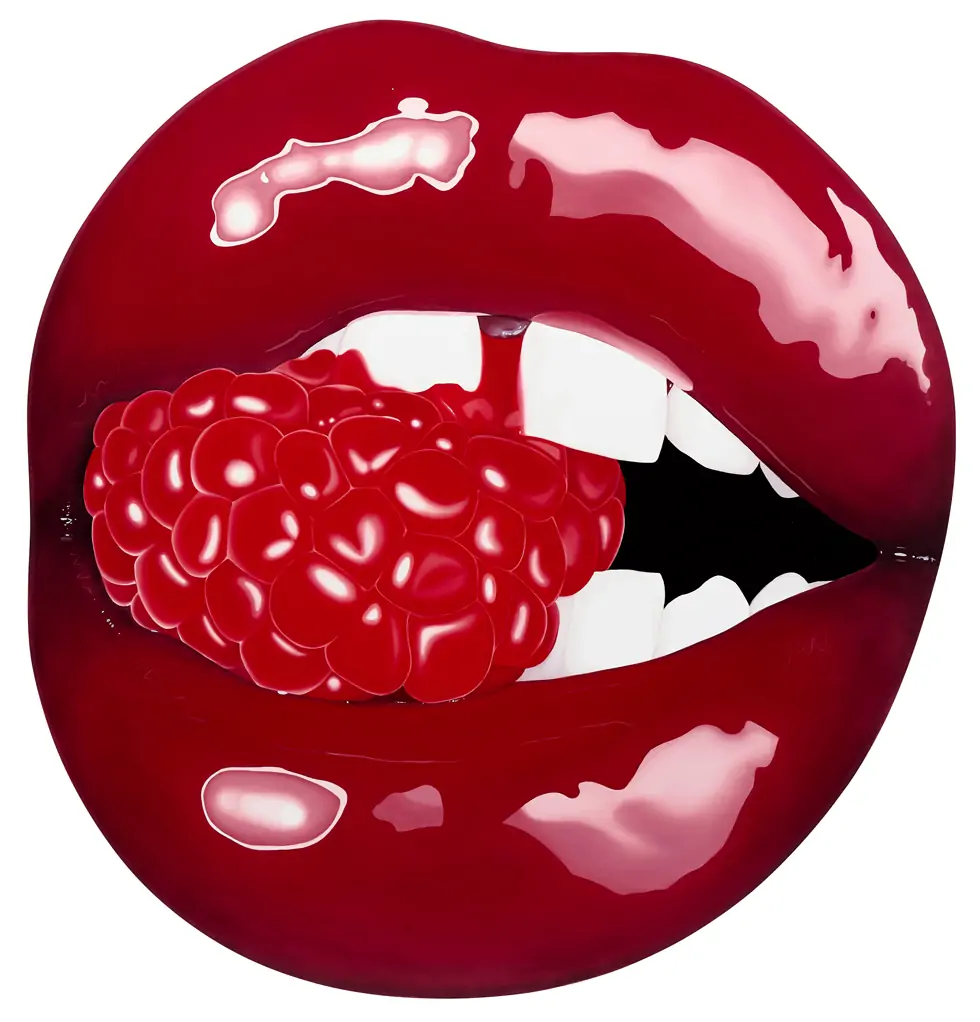
Your exhibition at the Grove Gallery, titled “Red,” explores themes of beauty, communication, and the pursuit of perfection, examining the power of colour on our emotions and decisions. Could you share more about the essence of this exhibition and its featured works?
SP: Since beginning to paint, I’ve always been drawn to the colour red, way more than any other colour; to me, it just stands out as being the most compelling of all the colours. I’m constantly returning to the art shop for more Scarlet Lake! Alongside this, there are many signals in society, including within fashion and beauty, to indicate that red is a particularly significant colour.
Red lipstick for example is widely recognised as being iconic, and having a transformative power than no other makeup item can rival. At one point I just wanted to understand why, what is it about this colour that has the power to excite and incite, which is where my inspiration for this exhibition began. I wanted to create a body of work that invites you to feel the deep impact of the colour red but also to initiate a conscious recognition of how profoundly red affects us and the power of colour in general to influence our emotions, thoughts and behaviours.
How do you hope your audience interacts with and interprets your art? Are there specific emotions or thoughts you aim to evoke?
SP: In general, I think I transmit a lot of playful joyfulness through my art, but I also like the fact that everyone has their own unique experience when viewing my art, based on their prior experiences, values and perspectives. With my exhibition ‘RED’, my aspiration is for people to experience the intense impact and drama that the colour red can evoke. Red is unique in its ability to arouse your nervous system and increase your heart rate (a phenomenon attributed to having the longest wavelength of all the colours on the visible spectrum), and I’d like to provoke that visceral reaction.
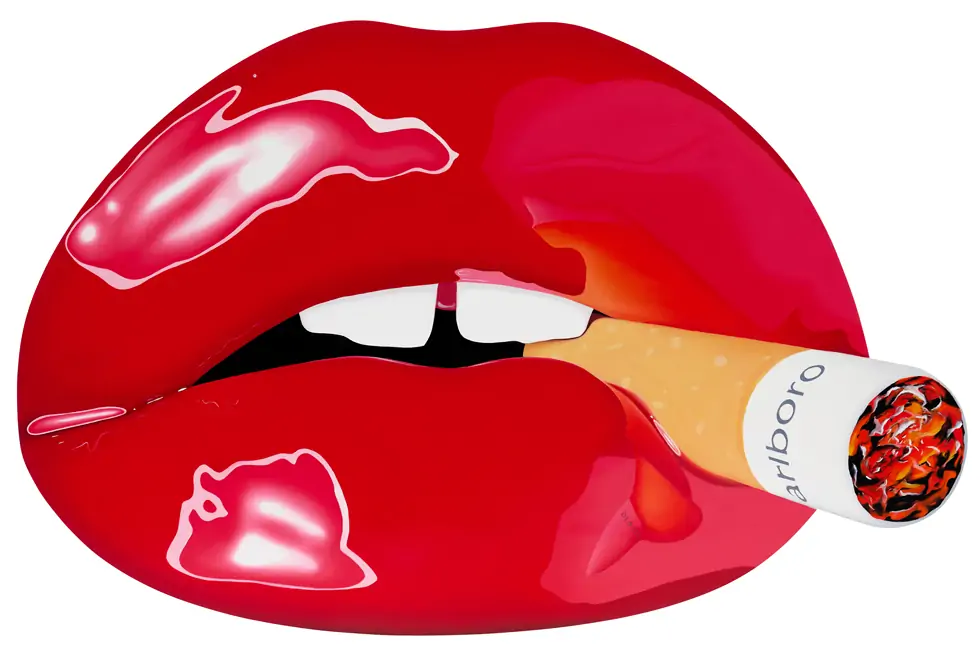
Additionally, what have been some of the most challenging aspects of developing your artistic voice? Where do you find inspiration when facing creative blocks?
SP: I’m a self-taught artist; when I first started painting, I was instinctively drawn to the face, intrigued by how we communicate and express emotion. In that sense I feel lucky to have always had a strong sense of my artistic path, and what I wanted to explore. To keep inspired I find it important to keep visually stimulated as well as expanding my mind and awareness. It’s essential to me to engage with the world around me through seeing exhibitions and meeting people, also reading literature around the subjects I’m interested in.
In an era dominated by digital art and social media, how have these platforms impacted your work and its reception?
SP: The rise of tech and the increase in digital dominance has definitely affected the aesthetic of how I paint. When I first started painting, I had a style that was quite painterly, lots of brush strokes, dripping paint etc, and gradually the aesthetic of my work evolved to become more and more ‘perfect’, to the point where the colours are perfectly blended with no brush visible strokes at all.
If you hadn’t seen my paintings in real life, you could mistake my oil painting for a digitally produced pixel-perfect image. In terms of the reception of my work, probably many people would now first come to view my work via a screen. I think my artworks do lend themselves to being viewed online due to my bold use of colour and glossiness and just general attention to creating an attractive image, but I would always encourage people to try and see them in real life.
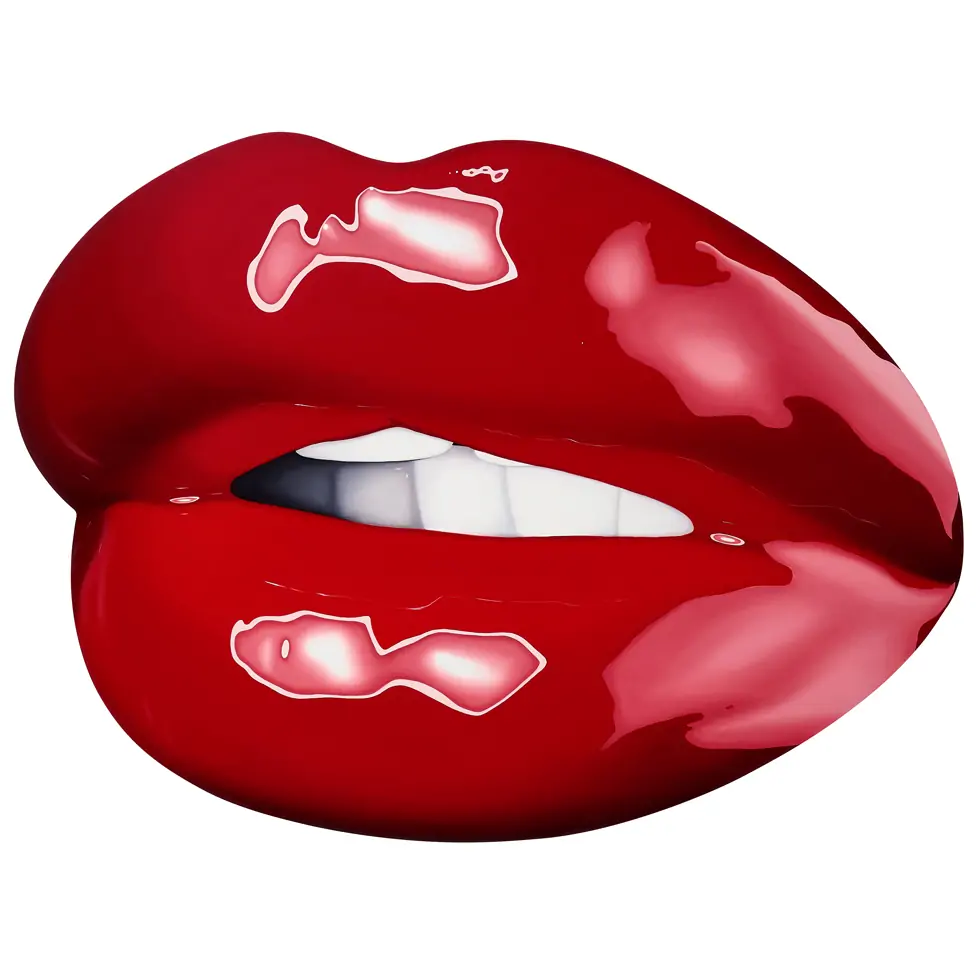
What role do you believe artists like yourself play in society, especially in contemporary times marked by cultural, social, and technological shifts?
SP: I think the role of art is to reflect back something of the society and times that you live in, to raise consciousness and give people a space and time to contemplate and feel. In every era, there are unique cultural, social and technological shifts, and this is captured and immortalised in the art of the time, which is why looking at historical art is so profound, it tells you so much.
As 2023 comes to a close, are there new themes or mediums you are eager to explore in your future projects? What direction do you see your art taking in the coming years?
SP: Yes! I’m looking forward to 2024. There are a couple of things, firstly I would like to focus on the fact that all my lip paintings are more than imagined representations and are in essence ‘portraits’.
Diving into that, I’m planning to create an exhibition featuring lip portraits of people who are pivotal in shaping contemporary culture, blending the personal with the cultural, offering a perspective on societal influence and individual expression. I also envisage my artistic journey being influenced by the incredible recent developments in technology, the philosophical conundrums that throws up and the new tools that we have at our disposal.
Lastly, what does art mean to you?
SP: Freedom – Freedom to imagine, freedom to create, and to communicate and express oneself
©2023 Sara Pope



